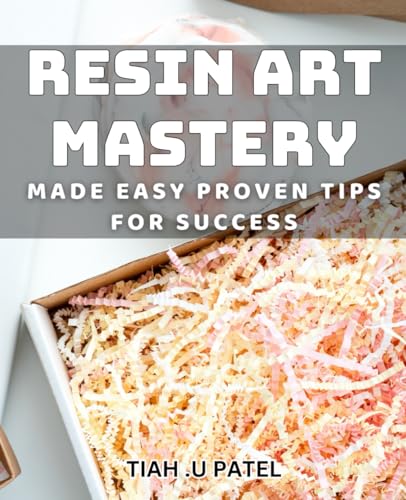Creating the perfect skirt or veil starts with the delicate beauty of tulle. Whether you’re dreaming of a flowy ballet skirt or a romantic bridal veil, tulle adds that magical touch. Its lightweight, airy fabric offers endless possibilities for your sewing projects.
With this guide, you’ll discover essential tips and techniques to work confidently with tulle. From choosing the right type to mastering stitching methods, you’ll learn how to bring your creative visions to life. Get ready to transform simple materials into stunning garments and accessories that showcase your unique style.
Choosing the Right Tulle
Selecting the appropriate tulle ensures your skirts and veils look stunning and feel comfortable. Consider both type and color to match your project needs.
Types of Tulle
Different tulle types offer various textures and durability:
- Organza Tulle: Stiff and crisp, perfect for structured ballet skirts.
- Net Tulle: Lightweight and sheer, ideal for delicate bridal veils.
- Foil Tulle: Shiny and eye-catching, suitable for evening gowns.
- Stretch Tulle: Flexible and elastic, great for fitted skirts.
Selecting the Color
- Classic Whites and Ivory: Timeless choices for bridal veils and traditional skirts.
- Pastels: Soft hues like blush pink or baby blue enhance romantic styles.
- Bold Colors: Vibrant shades add a modern twist to your garments.
- Metallics: Gold or silver tulle provides a luxurious finish for special events.
| Tulle Type | Best For | Common Colors |
|---|---|---|
| Organza | Structured skirts | White, ivory, pastel |
| Net | Bridal veils | White, ivory |
| Foil | Evening gowns | Metallics, bold colors |
| Stretch | Fitted skirts | Various, including bold |
Tools and Materials Needed
Gather the essential tools and materials before starting your tulle project. Having the right supplies ensures a smooth sewing experience.
Essential Sewing Tools
- Sewing Machine: Choose one with a fine needle for delicate tulle.
- Needles: Use sharp needles, such as size 60/8, to prevent fabric damage.
- Thread: Opt for polyester or silk thread for durability and a smooth finish.
- Scissors: Invest in a pair of fabric scissors for precise cutting.
- Pins and Pin Cushion: Use fine pins to hold tulle layers together without leaving marks.
- Rotary Cutter and Mat: Facilitate accurate cutting of multiple tulle layers.
Additional Supplies
- Measuring Tape: Ensure accurate measurements for your skirt or veil.
- Chalk or Fabric Marker: Mark patterns and guidelines on tulle.
- Seam Ripper: Easily correct mistakes without damaging the fabric.
- Iron and Ironing Board: Press tulle gently to remove wrinkles before sewing.
- Stabilizer: Apply lightweight stabilizer to prevent stretching during sewing.
- Elastic or Ribbon: Finish the waistband or veil edges for a polished look.
Techniques for Sewing Skirts with Tulle
Master these techniques to create elegant and flowing tulle skirts effortlessly.
Preparing the Fabric
- Measure Precisely
Determine your waist size and desired skirt length to cut the tulle accurately, ensuring a perfect fit.
- Iron Carefully
Gently iron the tulle on a low setting to remove wrinkles without damaging the delicate fibers.
- Layer Strategically
Decide the number of tulle layers based on the skirt’s fullness, spacing each layer evenly for a uniform look.
Hemming and Layering
- Hem the Edges
Fold the hem of the tulle twice, secure with pins, and sew using a fine needle and matching thread to create a clean finish.
- Attach the Waistband
Sew the tulle skirt to the waistband, distributing the fabric evenly to prevent bunching and ensure comfort.
- Create Volume with Layers
Alternate different tulle layers or add gathered stitching to enhance the skirt’s volume, allowing it to flow gracefully.
- Secure the Layers
Stitch the layers together at intervals to maintain their position and add durability to the skirt.
Creating Veils with Tulle
Crafting a veil with tulle adds elegance to any ensemble. Follow these guidelines to create a stunning veil tailored to your style.

Designing the Veil
Start by determining the veil’s length and shape to match your gown. Measure from the desired starting point to the end length, considering floor-length or chapel styles. Select the tulle type based on the veil’s purpose:
- Organza: Provides structure and sheen for formal veils.
- Net: Offers a delicate, airy appearance suitable for romantic looks.
- Foil: Adds a subtle shimmer for a luxurious finish.
Choose a color that complements your outfit, opting for classic whites, ivories, or matching hues. Incorporate embellishments like lace trims, ribbon edges, or beaded appliqués to personalize your veil. Draft a simple pattern to outline your veil’s shape, ensuring symmetry and balance in the design.
Sewing Tips for Veils
Use a fine needle to prevent tulle from tearing during stitching. Opt for a lightweight, polyester thread for durability without adding bulk. Employ a zigzag stitch or a narrow straight stitch to secure seams while maintaining the veil’s delicate appearance. When attaching embellishments, use small, even stitches to keep decorations in place. Press seams gently with a low-heat iron, placing a pressing cloth between the iron and tulle to avoid damage. Secure the veil’s edges with a rolled hem or by binding with ribbon for a polished finish. Test stitching on a scrap piece of tulle to ensure your technique works seamlessly before assembling the final veil.
Maintenance and Care
Proper maintenance keeps your tulle skirts and veils looking pristine. Follow these care tips to extend their lifespan.
Cleaning Tulle Garments
Cleaning tulle garments requires gentle handling to preserve their delicate fabric. Hand wash in cold water using a mild detergent to prevent damage. If machine washing, place tulle items in a mesh laundry bag and select a gentle cycle. Avoid harsh chemicals and bleach, which weaken the fabric. After washing, lay the garment flat to air dry, ensuring it retains its shape. To remove wrinkles, iron on a low setting using a pressing cloth, preventing scorching of the tulle.
Storage Tips
« Transform Your Cleaning Routine: How to Make Eco-Friendly Cleaning Cloths in 5 Simple Steps
Store your tulle skirts and veils properly to maintain their condition. Use padded hangers to support the fabric and avoid creasing. Keep items in a cool, dry place away from direct sunlight to prevent fading. Layer tulle with tissue paper to maintain shape and reduce wrinkles. Alternatively, fold veils gently and place them in a breathable fabric bag. Avoid overcrowding storage containers, which can cause deformation. Regularly inspect stored garments to ensure they remain free from pests and moisture.
Conclusion
Embracing tulle opens up a world of creative possibilities for your skirts and veils. With the right techniques and tools you can craft pieces that are not only beautiful but also uniquely yours.
Choose the perfect tulle for your project and take your time to perfect each step. Enjoy the process and let your imagination guide you. Your tulle creations will surely bring elegance and charm to any occasion.

















